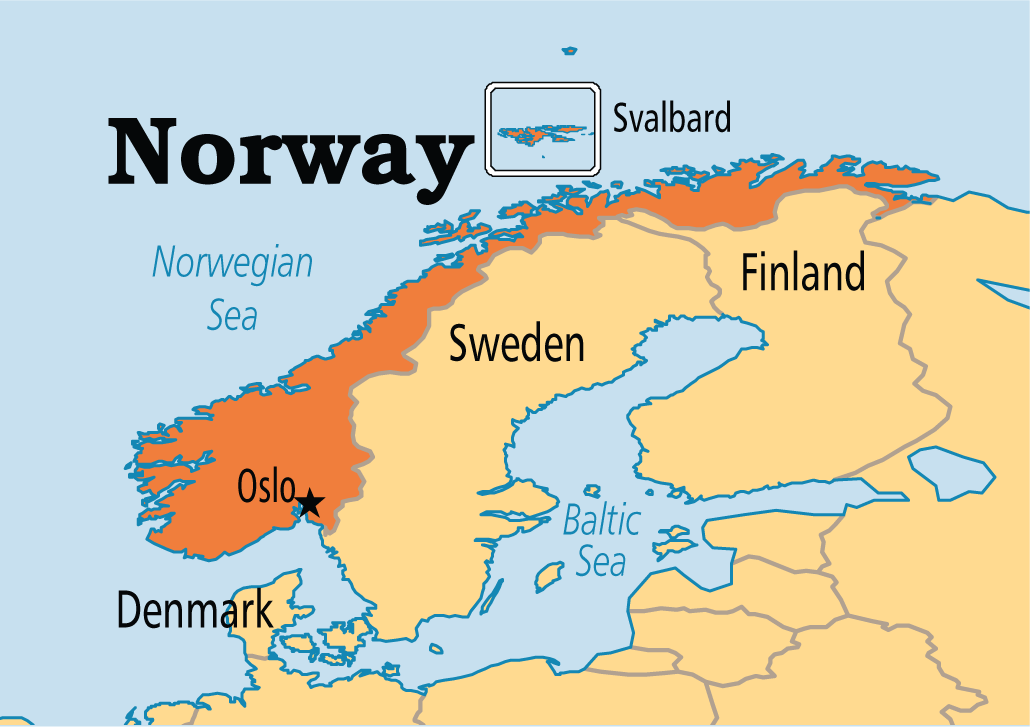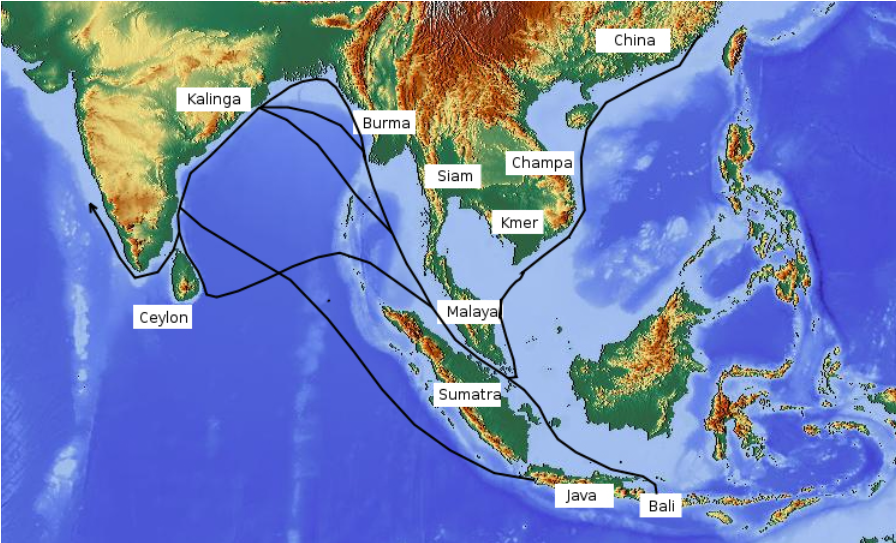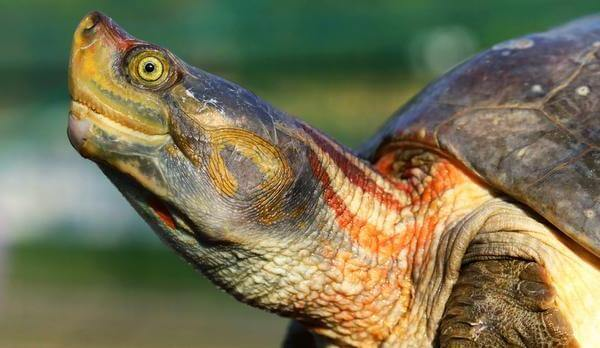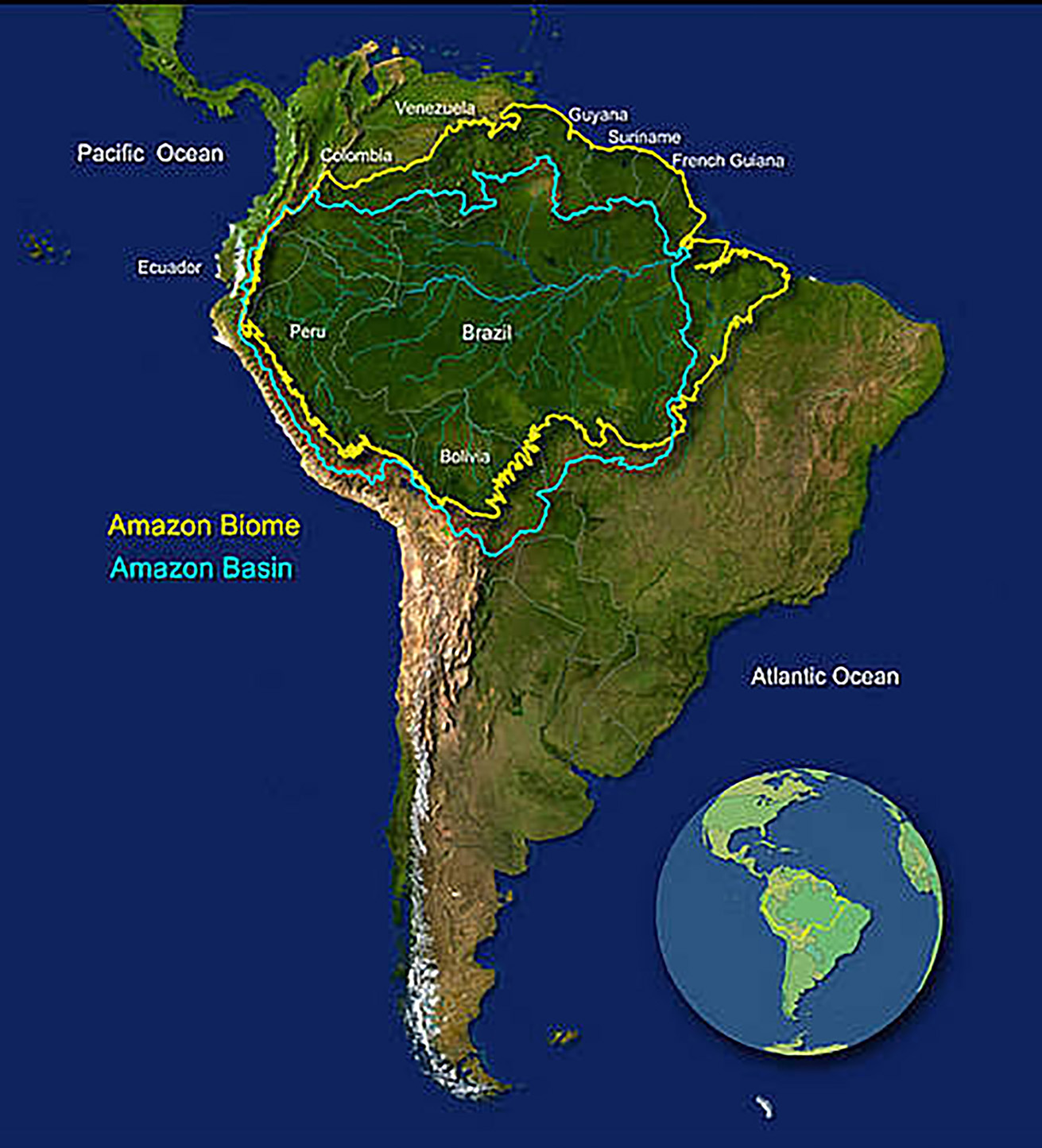Infographics
Biodiversity & Environment
Global Offshore Wind Alliance
For Prelims: Global Offshore Wind Alliance, Offshore Wind Energy, Net zero
For Mains: Status of Wind Energy in India and related steps taken
Why in News?
Recently, nine new countries sign up for Global Offshore Wind Alliance at COP27.
- Nine new countries: Belgium, Colombia, Germany, Ireland, Japan, the Netherlands, Norway, the UK, and the US.
- Australia announces to sign up with global offshore wind alliance.
What is Global Offshore Wind Alliance (GOWA)?
- It was established to ramp up of offshore wind in order to tackle the climate and energy security crises.
- It was set up by the International Renewable Energy Agency (IRENA), Denmark and the Global Wind Energy Council.
- GWEC was established in 2005 to provide a credible and representative forum for the entire wind energy sector at an international level.
- Several organizations are supporting the alliance and promoting offshore wind in their respective regions.
- Both IRENA and the International Energy Agency (IEA) expect that offshore wind capacity will need to exceed 2000 GW in 2050, from just over 60 GW today, to limit the rise in global temperatures to 1.5 degree Celsius and achieve net zero.
- To reach this target, GOWA will aim to contribute to accelerating growth to reach a total of at least 380 GW installed capacity by the end of 2030.
What is Offshore Wind Energy?
- About:
- Wind energy today typically comes in two different “types”: onshore wind farms which are large installations of wind turbines located on land, and offshore wind farms which are installations located in bodies of water.
- Offshore wind energy refers to the deployment of wind farms inside the water bodies. They utilise the sea winds to generate electricity. These wind farms either use fixed-foundation turbines or floating wind turbines.
- A fixed-foundation turbine is built in shallow water, whereas a floating wind turbine is built in deeper waters where its foundation is anchored in the seabed. Floating wind farms are still in their infancy.
- Offshore wind farms must be at least 200 nautical miles from the shore and 50 feet deep in the ocean.
- Offshore wind turbines produce electricity which is returned to shore through cables buried in the ocean floor.
- Status of Wind Energy in India:
- India’s electricity generation from wind reached 39.2 gigawatts (GW) a year in March 2021. An addition of another 20 GW over the next five years is expected to happen soon.
- The compound annual growth rate for wind generation has been 11.39% between 2010 and 2020, and for installed capacity, it has been 8.78%.
- More than 95% of commercially exploitable resources are located in seven states: Andhra Pradesh, Gujarat, Karnataka, Madhya Pradesh, Maharashtra, Rajasthan and Tamil Nadu.
- Policies related to Wind Energy:
- National Wind-Solar Hybrid Policy: The main objective of the National Wind-Solar Hybrid Policy, 2018 is to provide a framework for promotion of large grid connected wind-solar PV hybrid systems for optimal and efficient utilization of wind and solar resources, transmission infrastructure and land.
- National Offshore Wind Energy Policy: The National Offshore wind energy policy was notified in October 2015 with an objective to develop the offshore wind energy in the Indian Exclusive Economic Zone (EEZ) along the Indian coastline of 7600 km.
What are the Benefits of Offshore Wind Energy?
- Wind speed over water bodies is high and is consistent in direction. As a result, offshore wind farms generate more electricity per installed capacity.
- Fewer offshore turbines are required to produce the same capacity of energy as compared to onshore ones.
- Offshore wind farms have a higher CUF (capacity utilisation factor) than onshore wind farms. Therefore, offshore wind power allows for longer operating hours.
- A wind turbine's CUF is equal to the average output power divided by the maximum power capabilities.
- It's possible to build bigger and taller offshore windmills, resulting in increased energy harvest.
- Furthermore, the wind flow is not restricted by hills or buildings.
UPSC Civil Services Examination, Previous Year Question (PYQ)
Q. Give an account of the current status and the targets to be achieved pertaining to renewable energy sources in the country. Discuss in brief the importance of National Programme on Light Emitting Diodes (LEDs). (2016)


International Relations
India Norway Maritime Cooperation
For Prelims: India Norway Joint Working Group, Geography of Norway
For Mains: India Norway Relations, Green Maritime
Why in News?
Recently, the 8th Norway-India Joint Working Group Maritime meeting was held in Mumbai, India.
- Norway has the technical expertise in Maritime sector and India has huge potential for development of Maritime sector and large pool of trained seafarers, which make both countries natural complementary partners.
- Earlier, India had also prepared Maritime India Vision 2030, which has identified more than 150 initiatives across various maritime sectors like ports, shipping and waterways focusing on capacity augmentation etc.
What are the Key Discussions of the Meeting?
- Discussion was held on use of alternative fuels like green ammonia and hydrogen for futuristic shipping.
- The Norwegian Green Shipping Programme has been successful and the experience and expertise was shared in the meeting.
- India and Norway are part of the Green Voyage 2050 project.
- Both parties agreed on willingness, devotion, partnership and capacity building for achieving common goals.
- India is a signatory to Hongkong Convention for Recycling of Ships.
- In the meeting, India requested that European Union regulation should not hinder recycling of non-European countries which are compliant as per International Convention.
- Norway was requested not to prolong Ship recycling to India as a lot of investment has been made by Indian recyclers.
- The Norwegian delegation will also take part in INMARCO, the Green Shipping Conclave, and the Maritime ShEO conference.
- The Maritime ShEO conference is supported by Norway and focused on maritime diversity and sustainability, including gender equality in the maritime industry.
What is Maritime India Vision 2030?
- About:
- Maritime India Vision (MIV) 2030 is a ten-year blueprint for the maritime sector released by the Prime Minister of India at the Maritime India Summit in November 2020.
- MIV 2030 has been formulated in consultation with over 350+ public and private sector stakeholders, comprising ports, shipyards, inland waterways, trade bodies and associations, national and international industry and legal experts.
- Themes:
- MIV 2030 is based on 10 themes covering all the facets of the Indian maritime sector and is a comprehensive effort to define and meet national maritime objectives:
- Develop best-in-class Port infrastructure.
- Drive Exchange to Exchange Logistics Efficiency and Cost Competitiveness.
- Enhance Logistics Efficiency through Technology and Innovation.
- Strengthen Policy and Institutional Framework to Support all Stakeholders.
- Enhance Global Share in Ship Building, Repair and Recycling.
- Enhance Cargo and Passenger Movement through Inland Waterways.
- Promote Ocean, Coastal and River Cruise Sector.
- Enhance India’s Global stature and Maritime Co-operation.
- Lead the World in Safe, Sustainable & Green Maritime Sector.
- Become Top Seafaring Nation with World Class Education, Research & Training.
- MIV 2030 is based on 10 themes covering all the facets of the Indian maritime sector and is a comprehensive effort to define and meet national maritime objectives:
- Key Targets 2030:
- Three Major Ports with >300 Million Ton Per Annum (MTPA) cargo handling capacity.
- More than 75% of Indian cargo transshipment handled by Indian ports.
- More than 85% of cargo handled at Major Ports by Public Private Partnership/ other operators.
- Average vessel turnaround time (containers) of less than 20 hours.
- Global ranking of Top 10 in ship building and ship repair.
- More than 15 Lakh annual cruise passengers.
- More than 60% share of renewable energy at Major Ports.
UPSC Civil Services Examination, Previous Year Question (PYQ)
Q. With reference to ‘Indian Ocean Rim Association for Regional Cooperation (IOR-ARC)’, consider the following statements: (2015)
- It was established very recently in response to incidents of piracy and accidents of oil spills.
- It is an alliance meant for maritime security only.
Which of the statements given above is/are correct?
(a) 1 only
(b) 2 only
(c) Both 1 and 2
(d) Neither 1 nor 2
Ans: (d)

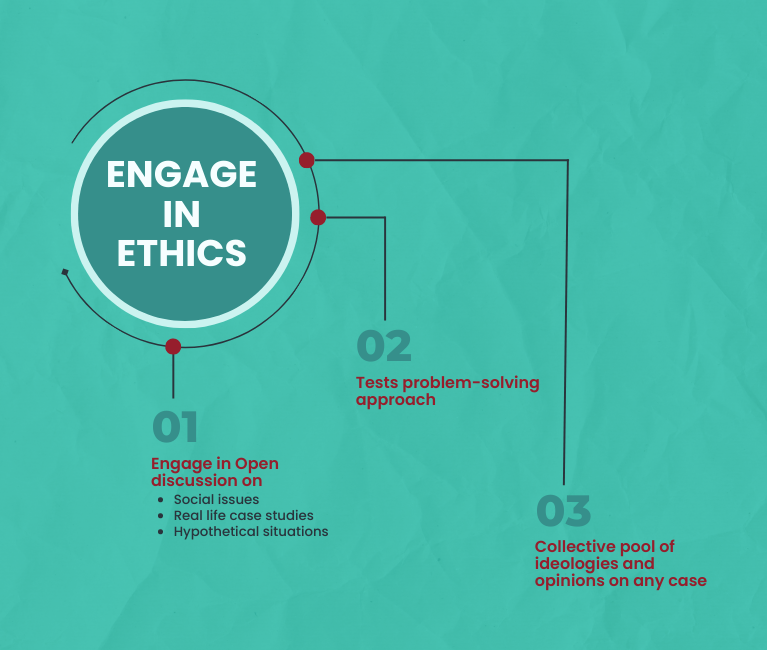
Indian Heritage & Culture
Baliyatra
For Prelims: Baliyatra, Mahanadi, Bay of Bengal, Kalidasa
For Mains: Kalinga empire’s links with Southeast Asia
Why in News?
Recently, the Prime Minister in his address to the Indian diaspora in Bali on the sidelines of the G20 summit mentioned the annual Baliyatra on the banks of the Mahanadi in Cuttack that commemorates age-old links between ancient Kalinga and Southeast Asia.
- Baliyatra of year 2022 also found a place in the Guinness World Records for achieving an impressive feat of origami, the creation of beautiful paper sculptures.
What is Baliyatra?
- About:
- Baliyatra, literally ‘voyage to Bali’ is one of the country’s largest open-air fares.
- Baliyatra is a week-long event which begins on Kartik Purnima (full moon night in the month of Kartik)
- Historical/Cultural Significance:
- It is organised every year to commemorate the 2,000-year-old maritime and cultural links between ancient Kalinga (today’s Odisha) and Bali and other South and Southeast Asian regions like Java, Sumatra, Borneo, Burma (Myanmar) and Ceylon (Sri Lanka).
- According to historians, popular items of trade between Kalinga and Southeast Asia included pepper, cinnamon, cardamom, silk, camphor, gold, and jewellery.
- The Bali Yatra celebrates the ingenuity and skill of those expert sailors who made Kalinga one of the most prosperous empires of its time.
- Commercial Significance:
- Baliyatra has a significant commercial dimension in addition to its cultural and historical elements.
- It is a time when people purchase everything from automobiles and electronic devices to local artisanal products at prices that are comparatively low.
- The district administration allots more than 1,500 stalls to traders through an auction, and the fair is estimated to see business worth more than Rs 100 crore over the period it lasts.
- Baliyatra has a significant commercial dimension in addition to its cultural and historical elements.
How is Kalinga linked with Southeast Asia?
- Origin – Growth of Ports: The Kalinga Empire (present-day Odisha) is known for its glorious maritime history. Due to the geographical location of Kalinga, this area saw the growth of ports as early as the 4th and the 5th century BC.
- Some of the famous ports, Tamralipti, Manikpatna, Chelitalo, Palur and Pithunda allowed India to connect with other countries via the sea. Soon, the Kalingas had trade links with Srilanka, Java, Borneo, Sumatra, Bali and Burma.
- Bali formed a part of the four islands that were collectively called the Suvarnadvipa, today known as Indonesia.
- Some of the famous ports, Tamralipti, Manikpatna, Chelitalo, Palur and Pithunda allowed India to connect with other countries via the sea. Soon, the Kalingas had trade links with Srilanka, Java, Borneo, Sumatra, Bali and Burma.
- Kalinga's Ships: The Kalingas constructed large boats called the ‘Boitas’ and with the help of these, they traded with the Indonesian islands.
- The Bay of Bengal was once known as the Kalinga Sea as it was thronged by these ships.
- The dominance of the Kalingas over the sea routes can be understood from the fact that Kalidasa in his Raghuvamsa referred to the King of Kalinga as ‘The Lord of the Sea’.
- Cultural Exchange with Indonesia: The Kalingas frequently traded with the island of Bali. The trade-in commodities also led to the interchange of ideas and beliefs.
- Odia merchants formed settlements in Bali and influenced its culture and ethics which led to the growth of Hinduism in the region.
- Hinduism blended well with the Balinese concepts and even today, ‘Balinese Hinduism’ is practised by a majority of their population.
- They worship various Hindu Gods such as Shiva, Vishnu, Ganesha and Brahma.
- Shiva was considered to be the presiding deity and believed to be the elder brother of Buddha.
- Hinduism blended well with the Balinese concepts and even today, ‘Balinese Hinduism’ is practised by a majority of their population.
- The Balinese also celebrate Hindu Festivals such as Shivaratri, Durga Pooja and Saraswati Pooja.
- The ‘Masakapan ke Tukad’ festival celebrated in Bali is similar to the Bali Yatra festival in Odisha. Both are celebrated in the memory of their maritime ancestors.
- Odia merchants formed settlements in Bali and influenced its culture and ethics which led to the growth of Hinduism in the region.


Science & Technology
Food-Animal Farming and Antimicrobial Resistance
For Prelims: Antimicrobial Resistance, Pandemic, Climate Change, WHO, ICMR, Zoonotic Disease.
For Mains: Food-Animal Farming and Antimicrobial Resistance.
Why in News?
Poor animal health in factory farming can negatively affect food safety, our environment and climate, leading to Antimicrobial Resistance (AMR).
- Factory farming or intensive food-animal farming is the intense and confined farming of animals such as pigs, cows, and birds. They are industrial facilities that raise large numbers of animals, mostly indoors, in conditions intended to maximise production at a minimal cost.
What are the Issues?
- The suffering of animals within farms around the world is too often overlooked or seen to be separate from the big issues such as pandemics and the public health crisis, climate change and biodiversity loss, food insecurity and malnutrition.
- In reality, this can exacerbate the global problems as well as causing immense cruelty to billions of animals.
- Producing more than 50 billion factory-farmed land animals each year to satisfy growing demand for cheap meat requires using breeds of genetically uniform animals squashed together, creating an ideal breeding ground for disease that can jump to humans.
- When diseases jump from one species to another, they often become more infectious and cause more serious illness and death, leading to global pandemics.
- Bird flu and swine flu are two key examples where new strains constantly emerge from intensively farmed animals.
- However, there is an addition to this list — Antimicrobial Resistance which is overlooked among these big issues.
- The overuse of antibiotics on factory farms leads to superbugs that spread to workers, the environment and into the food chain.
- Factory farms, characterised by substandard husbandry practices and poor animal welfare, drive the increased use of antimicrobials, and are connected to the emergence of AMR alongside a range of zoonotic pathogens.
What is AMR and How Prevalent is it in India?
- AMR is the resistance acquired by any microorganism (bacteria, viruses, fungi, parasite, etc.) against antimicrobial drugs that are used to treat infections.
- It occurs when a microorganism changes over time and no longer responds to medicines making infections harder to treat and increasing the risk of disease spread, severe illness and death.
- The World Health Organisation (WHO) has identified AMR as one of the top ten threats to global health.
- In India, over 56,000 newborn deaths each year due to sepsis caused by organisms that are resistant to first line antibiotics.
- A study reported by ICMR (Indian Council of Medical Research) from 10 hospitals showed that when Covid patients acquire drug-resistant infections in hospitals, the mortality is almost 50-60%.
- The multi-drug resistance determinant, New Delhi Metallo-beta-lactamase-1 (NDM-1), emerged from this region.
- Africa, Europe and other parts of Asia have also been affected by multi-drug resistant typhoid originating from South Asia.
What Initiatives have been taken by the Government to Prevent AMR?
- AMR Surveillance and Research Network (AMRSN) was launched in 2013, to generate evidence and capture trends and patterns of drug resistant infections in the country.
- The National Action Plan on AMR focuses on One Health approach and was launched in April 2017 with the aim of involving various stakeholder ministries/departments.
- ICMR along with Research Council of Norway (RCN) initiated a joint call for research in antimicrobial resistance in 2017.
- ICMR along with the Federal Ministry of Education and Research (BMBF), Germany has a joint Indo-German collaboration for research on AMR.
- ICMR has initiated Antibiotic Stewardship Program (AMSP) on a pilot project across India to control misuse and overuse of antibiotics in hospital wards and ICUs.
Way Forward
- There is a need to develop sustainable food systems by increasing the demand for plant-based foods, in turn, reducing reliance on farmed animals and making higher welfare production systems — with more space, fewer antibiotics, healthier growth, and more natural environments — more feasible.
- There is a need to transform the food system to be more sustainable and significantly improve the overall health of animals and humans.
UPSC Civil Services Examination, Previous Year Question (PYQ)
Prelims
Q. Which of the following are the reasons for the occurrence of multi-drug resistance in microbial pathogens in India? (2019)
- Genetic predisposition of some people
- Taking incorrect doses of antibiotics to cure diseases
- Using antibiotics in livestock farming
- Multiple chronic diseases in some people
Select the correct answer using the code given below.
(a) 1 and 2
(b) 2 and 3 only
(c) 1, 3 and 4
(d) 2, 3 and 4
Ans: (b)
Mains
Q. Can overuse and free availability of antibiotics without Doctor’s prescription, be contributors to the emergence of drug-resistant diseases in India? What are the available mechanisms for monitoring and control? Critically discuss the various issues involved. (2014)


Indian Economy
5th Meeting of Governing Council of NIIF
For Prelims: NIIF, NBFCs, PPP projects, National Infrastructure Pipeline, PM GatiShakti, National Infrastructure Corridor
For Mains: Mobilization of Resources, Growth & Development, Infrastructure
Why in News?
Recently, the Union Minister for Finance & Corporate Affairs chaired the 5th meeting of the Governing Council (GC) of National Investment and Infrastructure Fund (NIIF).
What are the Highlights of the Meeting?
- India Japan Fund:
- In a Memorandum of Understanding, NIIF and Japan Bank for International Development (JBIC) have proposed to establish NIIF's first bilateral fund - the "India Japan Fund" - with contributions coming from the Government of India (GoI).
- The MoU was signed recently on 9th November, 2022.
- NBFCs:
- The GC noted that the two infrastructures Non-Banking Financial Companies (NBFCs), where NIIF has majority stakes, have increased their combined loan book from Rs. 4,200 crores to Rs. 26,000 crores in 3 years without experiencing any Non-Performing Loans (NPLs).
- The GC also guided NIIF to undertake advisory activities proactively to support central and state governments to create a pipeline of investible Public-Private Partnership (PPP) projects.
- Exploring Opportunities under Different Schemes:
- The Finance Minister exhorted the NIIFL team also to explore opportunities under the National Infrastructure Pipeline, PM GatiShakti and National Infrastructure Corridor.
- These schemes include a big pool of investible greenfield and brownfield investment projects, and to try and crowd in commercial capital into those opportunities.
- The Finance Minister exhorted the NIIFL team also to explore opportunities under the National Infrastructure Pipeline, PM GatiShakti and National Infrastructure Corridor.
- Status of Three Funds:
- The GC was apprised of the current status of the 3 funds that are currently managed by NIIFL –
- Master Fund: Invests primarily in operating assets in core infrastructure sectors such as roads, ports, airports, power, etc.
- Fund of Funds (FoF) : Managed by fund managers with experience in infrastructure and related sectors in India. Green Infrastructure, Mid-Income & Affordable Housing, Infrastructure Services, and allied sectors are some of the areas of focus.
- Strategic Opportunities Fund (SoF): SOF has been established with the objective to provide long-term capital to high-growth future-ready businesses in India. The fund’s strategy is to build a portfolio of large entrepreneur-led or professionally managed domestic champions and unicorns.
- The GC was apprised of the current status of the 3 funds that are currently managed by NIIFL –
Greenfield vs Brownfield Investment
- Greenfield Project:
- It refers to investment in a manufacturing, office, or other physical company-related structure or group of structures in an area where no previous facilities exist.
- Brownfield investment:
- The projects which are modified or upgraded are called brownfield projects.
- The term is used for purchasing or leasing existing production facilities to launch a new production activity.
What is the National Investment and Infrastructure Fund (NIIF)?
- NIIF is a government-backed entity established to provide long-term capital to the country’s infrastructure sector.
- The Indian government has a 49% stake in NIIF with the rest held by foreign and domestic investors.
- With the Centre’s significant stake, NIIF is considered India’s quasi-sovereign wealth fund.
- It was set up in December 2015 as a Category-II Alternate Investment Fund.
- Across its three funds, it manages over USD 4.3 billion of capital.
- Its registered office is in New Delhi.
UPSC Civil Services Examination, Previous Year Question (PYQ)
Q. With reference to ‘National Investment and Infrastructure Fund’, which of the following statements is/are correct? (2017)
- It is an organ of NITI Aayog.
- It has a corpus of `4,00,000 crore at present.
Select the correct answer using the code given below:
(a) 1 only
(b) 2 only
(c) Both 1 and 2
(d) Neither 1 nor 2
Ans: (d)


International Relations
Young Professionals Exchange between India and UK
For Prelims: Young Professionals Exchange, Indo-Pacific, Free-Trade Agreement (FTA)
For Mains: Effect of policies and politics of developed and developing countries on India’s interests.
Why in News?
Recently, United Kingdom (UK) and India decided to launch a Young Professionals Exchange in 2023.
- UK will offer 3000 degree-holding Indians in the 18-30 year age group places to work for up to two years.
- The scheme will commence in early 2023 and be on a reciprocal basis.
Why is the Indo-UK Partnership Important?
- For UK: India is a key strategic partner for the UK in the Indo-Pacific both in terms of market share and defence, as was underscored by the signing of the Defence and International Security Partnership between India and the UK in 2015.
- For Britain, a successful conclusion of an Free Trade Agreement (FTA) with India would provide a boost to its ‘Global Britain’ ambitions as the UK has sought to expand its markets beyond Europe since Brexit.
- Britain has been trying to seize opportunities in the growing economies of the Indo-Pacific to cement its place on the global stage as a serious global actor.
- The British would be better able to achieve this goal with good bilateral relations with India.
- For India: The UK is a regional power in the Indo-Pacific as it possesses naval facilities in Oman, Singapore, Bahrain, Kenya, and British Indian Ocean Territory.
- The UK has also confirmed USD 70 million of British International Investment funding to support the usage of renewable energy in India, which will help in building renewable energy infrastructure and developing solar power in the region.
- India has sought easy market access for Indian fisheries, pharma, and agricultural products besides duty concession for labour-intensive exports.
What are the Current Major Bilateral Issues between the Both Countries?
- Extradition of Indian Economic Offenders:
- The issue is the extradition of Indian economic offenders who are presently seeking shelter in Britain and using the legal system to their advantage.
- Offenders like Vijay Mallya, Nirav Modi and others have long taken shelter under the British system despite clear cut Indian cases against them which warrant extradition.
- Umbilical link between the British and Pakistani Deep State:
- This legacy of the long-gone British Raj in the sub-continent allows Britain to box in a higher weight category with the help of Pakistan on imperial follies of Jammu and Kashmir.
- The presence of a large Muslim community from the sub-continent in the UK, particularly from areas like Mirpur of Pakistan-occupied Kashmir adds to dissonance apart from the trap of vote bank politics.
- Non-Acceptance by White British:
- The unacceptance of the rise of India as a global power by white British people is another issue.
- India under the current Prime Minister has left behind Britain as the fifth largest economy in GDP terms and is on the way up.
- There is no difference between a modern and confident Indian and a British colonial Indian in terms of skin colour or the imperial legacy of the British Empire.
- The unacceptance of the rise of India as a global power by white British people is another issue.
Way Forward
- The profound ties of culture, history and language already give the UK a potentially strong foundation upon which to further deepen its relationship with India.
- With a whole new set of circumstances, India and Britain should recognise that they both need each other to achieve their larger goals.
UPSC Civil Services Examination, Previous Year Question (PYQ)
Q. The judicial systems in India and the UK seem to be converging as well as diverging in recent times. Highlight the key points of convergence and divergence between the two nations in terms of their judicial practices. (2020)


Biodiversity & Environment
Red Crowned Roofed Turtle
For Prelims: Convention on International Trade in Endangered Species, IUCN, Batagur kachuga, Bengal Roofed turtle.
For Mains: Red Crowned Roofed Turtle.
Why in News?
India has proposed to protect the Red-Crowned Roofed turtle at the 19th Conference of the Parties to CITES (Convention on International Trade in Endangered Species) in Panama.
What are the Highlights of the Conference?
- India has raised a proposal to the United Nations Convention on International Trade in Endangered Species on Wild Fauna and Flora for the addition of the riverine species to Appendix I from current Appendix II.
- The species covered by CITES are listed in three Appendices as per the degree of protection they need:
- Appendix I includes species threatened with extinction.
- Appendix II includes species not necessarily threatened with extinction but (where trade must be controlled).
- Appendix III contains species that are protected in at least one country, which has asked other CITES parties for assistance in controlling the trade.
- The species covered by CITES are listed in three Appendices as per the degree of protection they need:
- The 19th Conference of the Parties to CITES is being asked to consider stricter trade regulations for nearly six hundred species of animals and plants believed to be under increased threat of extinction from international trade.
What is a Red Crowned Roofed Turtle?
- Scientific Name: Batagur kachuga.
- Common Names: Bengal roof turtle, Red-crowned roofed turtle.
- About:
- Red Crowned Roofed Turtle is one of the 24 species endemic to India, is characterised by the bright colours such as red, yellow, white and blue on the faces and necks of the males.
- Distribution:
- It is a freshwater turtle species found in deep flowing rivers with terrestrial nesting sites.
- The Red-crowned roofed turtle is native to India, Bangladesh and Nepal.
- Historically, the species was widespread in the Ganga River, both in India and Bangladesh. It also occurs in the Brahmaputra basin.
- Currently in India, the National Chambal River Gharial Sanctuary is the only area with a substantial population of the species, but even this Protected Area and habitat are under threat.
- Threats:
- The species is highly susceptible to major hydrological projects and their impacts on river flow dynamics and nesting beaches, and water pollution. Since human activities on and along the river are disturbing, the entanglement in fishing nets has led to a significant impact on subpopulations.
- Degradation of habitat due to pollution and large-scale development activities like water extraction for human consumption and irrigation and irregular flow from the upstream dams and reservoirs are the main threats to these species.
- Sand mining and growing of seasonal crops along Ganga River are majorly affecting the sandbars along the river that are used by the species for nesting.
- Overharvesting the animal for illegal consumption and illegal international trade are other reasons for its extinction threat.
- Over 11,000 tortoises and freshwater turtles have been seized in India from 2009-2019, found a study by TRAFFIC, a global NGO working on trade in wild animals and plants and their conservation.
- Conservation Status:
- The International Union for Conservation of Nature (IUCN) Red List: Critically Endangered
- Wildlife Protection Act (WPA): Schedule I
- CITES : Appendix II
UPSC Civil Services Examination, Previous Year Question (PYQ)
Q. Consider the following fauna of India: (2013)
- Gharial
- Leatherback turtle
- Swamp deer
Which of the above is/are endangered?
(a) 1 and 2 only
(b) 3 only
(c) 1, 2 and 3
(d) None
Ans: (c)

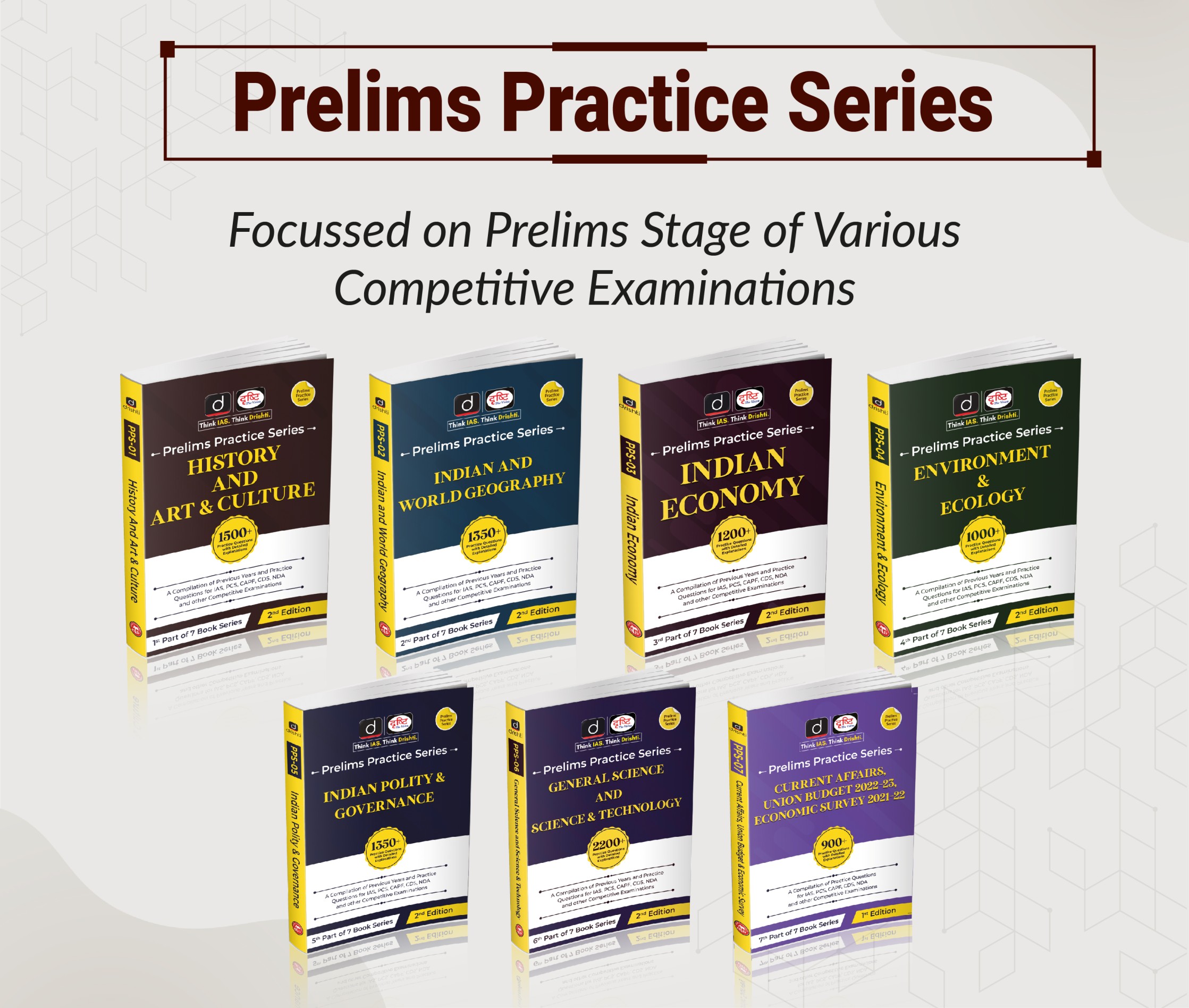
Biodiversity & Environment
Amazon Rainforest
For Prelims: Amazon Rainforest, World Wildlife Fund
For Mains: Environment Pollution and Degradation, Conservation
Why in News?
According to a new report ‘Living Amazon Report’ 2022 by the World Wildlife Fund (WWF), some 35% of the rainforest is either totally lost or highly degraded.
- The report was released at the 27th Conference of Parties (COP27) to the United Nations Framework Convention on Climate Change in Sharm El-Sheikh, Egypt.
- The report outlined the current status of the Amazon biome and basin, summarised key pressures and drivers of change and outlined a conservation strategy.
What are the Highlights of the Report?
- Vast tracts of the Amazon rainforest, which serve as carbon sinks and the planet’s lungs, are in crisis.
- Some 35% of the rainforest is either totally lost or highly degraded, while another 18% have been converted for other purposes.
- Amazon forests are threatened due to deforestation, fires and degradation.
- Surface water has been lost and rivers are increasingly disconnected and polluted.
- This immense pressure will irreversibly damage the Amazon and the planet in general very shortly.
- Economic activities, most notably extensive cattle ranching and agriculture, illegal activities and poorly planned infrastructure, threaten the region and cause deforestation and degradation throughout the biome, with many areas severely affected.
- Nearly 600 infrastructure projects are in operation along rivers in the Amazon.
- Some 20 planned road projects, 400 operating or planned dams and numerous mining projects continue to dump chemicals such as mercury into the rivers.
What are the Suggestions?
- The protection of the Amazon requires a combination of strategies and approaches that combine conservation requirements with the developmental needs of the countries that comprise it.
- Strategies for effective, integrated landscape management include:
- Conversion-free landscapes
- Sustainably managed forests
- Legal trade
- Ensuring the rights of indigenous peoples, local communities, women and young people.
- These strategies are intended to complement well-managed conservation areas and indigenous territories to form a network of well-conserved landscapes.
- Cross-cutting strategies in three key areas — policies, knowledge generation and communications — are also needed for the conservation and sustainable management of the Amazon biome, its forests and rivers.
- The biome urgently requires effective policies, research and greater awareness of its current status.
What are the Amazon Rainforests?
- These are large tropical rainforests occupying the drainage basin of the Amazon River and its tributaries in northern South America and covering an area of 6,000,000 square km.
- Tropical forests are closed-canopy forests growing within 28 degrees north or south of the equator.
- They are very wet places, receiving more than 200 cm rainfall per year, either seasonally or throughout the year.
- Temperatures are uniformly high - between 20°C and 35°C.
- Such forests are found in Asia, Australia, Africa, South America, Central America, Mexico and on many of the Pacific Islands.
- Comprising about 40% of Brazil’s total area, it is bounded by the Guiana Highlands to the north, the Andes Mountains to the west, the Brazilian central plateau to the south, and the Atlantic Ocean to the east.
UPSC Civil Services Examination, Previous Year Question (PYQ)
Q. Which one of the following pairs is correctly matched? (2013)
| Geographical Feature | Region | |
| (a) | Abyssinian Plateau | Arabia |
| (b) | Atlas Mountains | North-Western Africa |
| (c) | Guiana Highlands | South-Western Africa |
| (d) | Okavango Basin | Patagonia |
Ans: (b)
Exp:
- Abyssinian Plateau is a plateau in Ethiopia (Africa) located at an elevation of 1388 metres above sea level.
- Atlas Mountains are a series of mountain ranges in northwestern Africa, running generally southwest to northeast. It forms the geologic backbone of the countries of the Maghreb (the western region of the Arab world) – Morocco, Algeria, and Tunisia.
- Guiana Highlands is the region in northern South America where Brazil, Guyana, and Venezuela meet at Mount Roraima. It is bounded by the Orinoco and Amazon river basins, and by the coastal lowlands of the Guianas.
- The Okavango river basin is the fourth-longest river system in southern Africa. It is an endorheic basin (watershed which does not drain to the sea) found in southwestern Africa.
- Therefore, option (b) is the correct answer.






